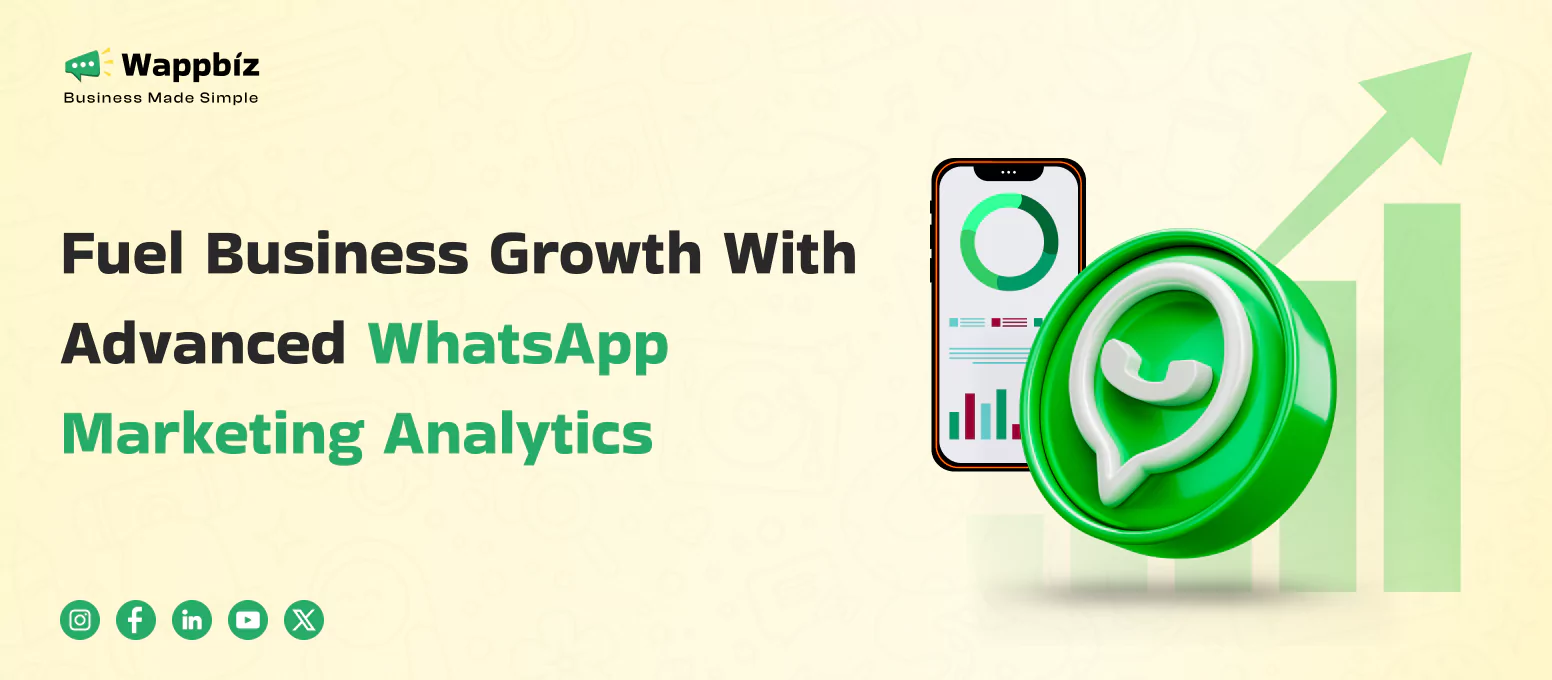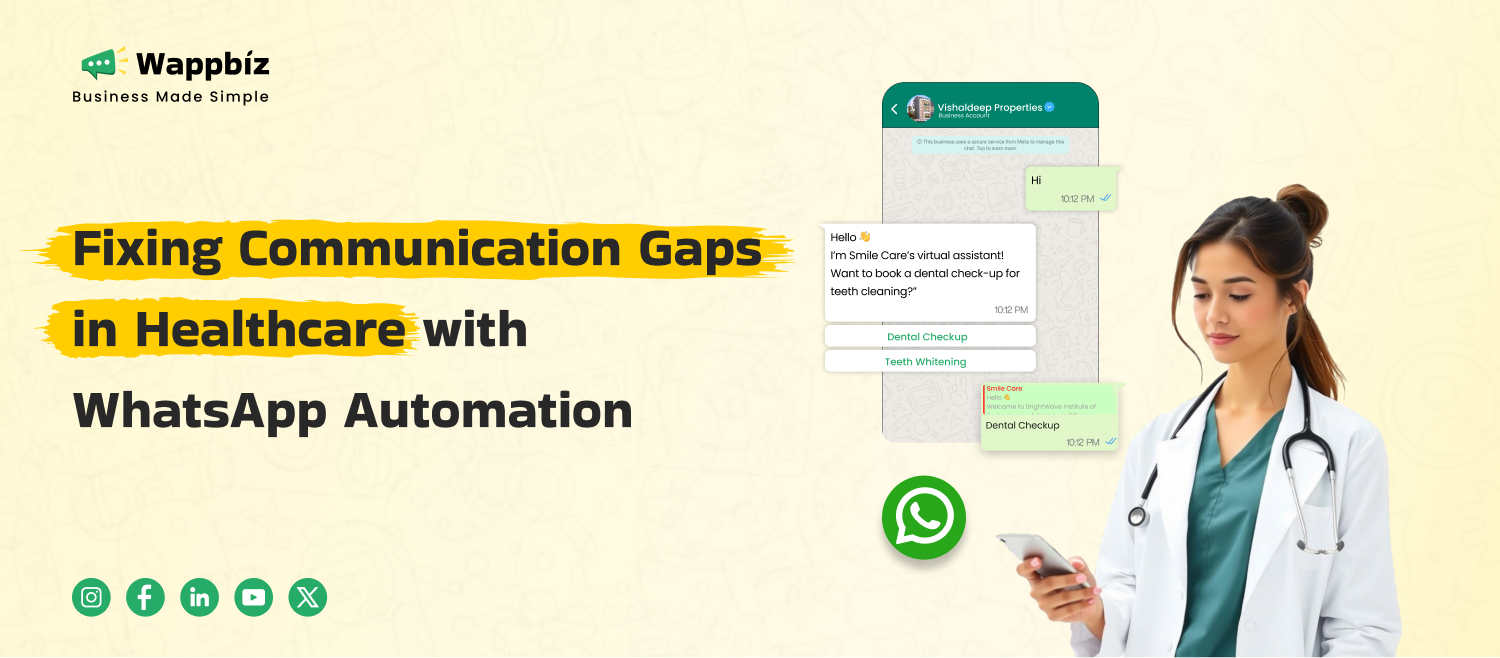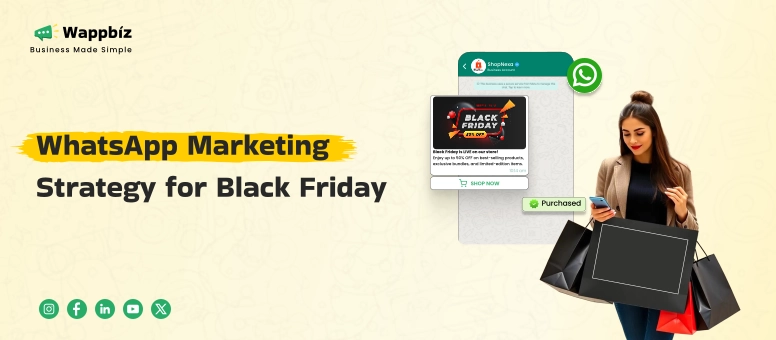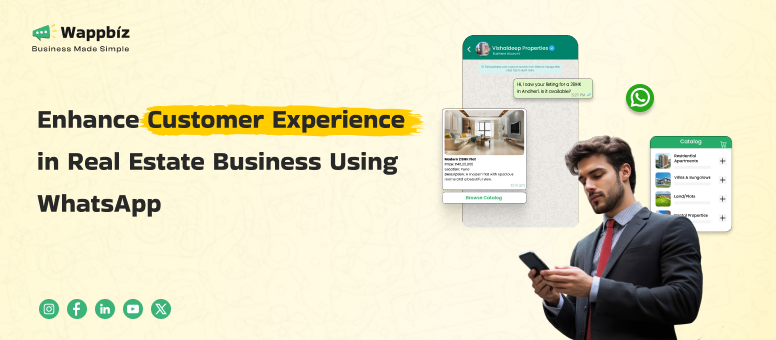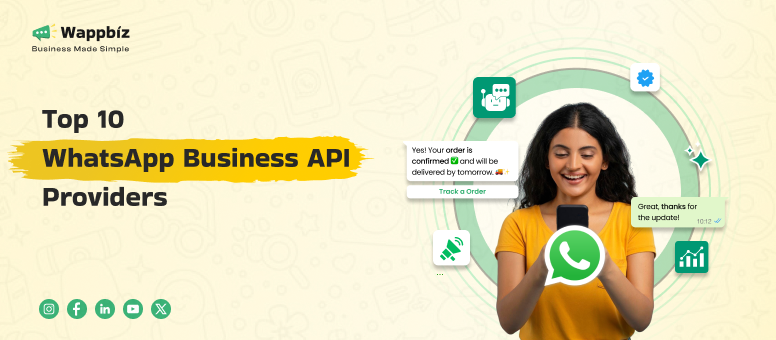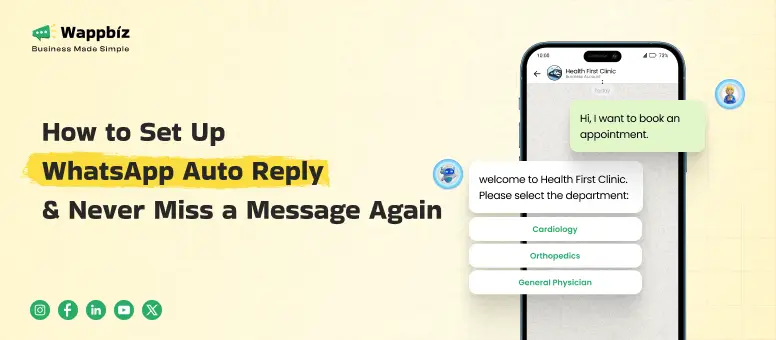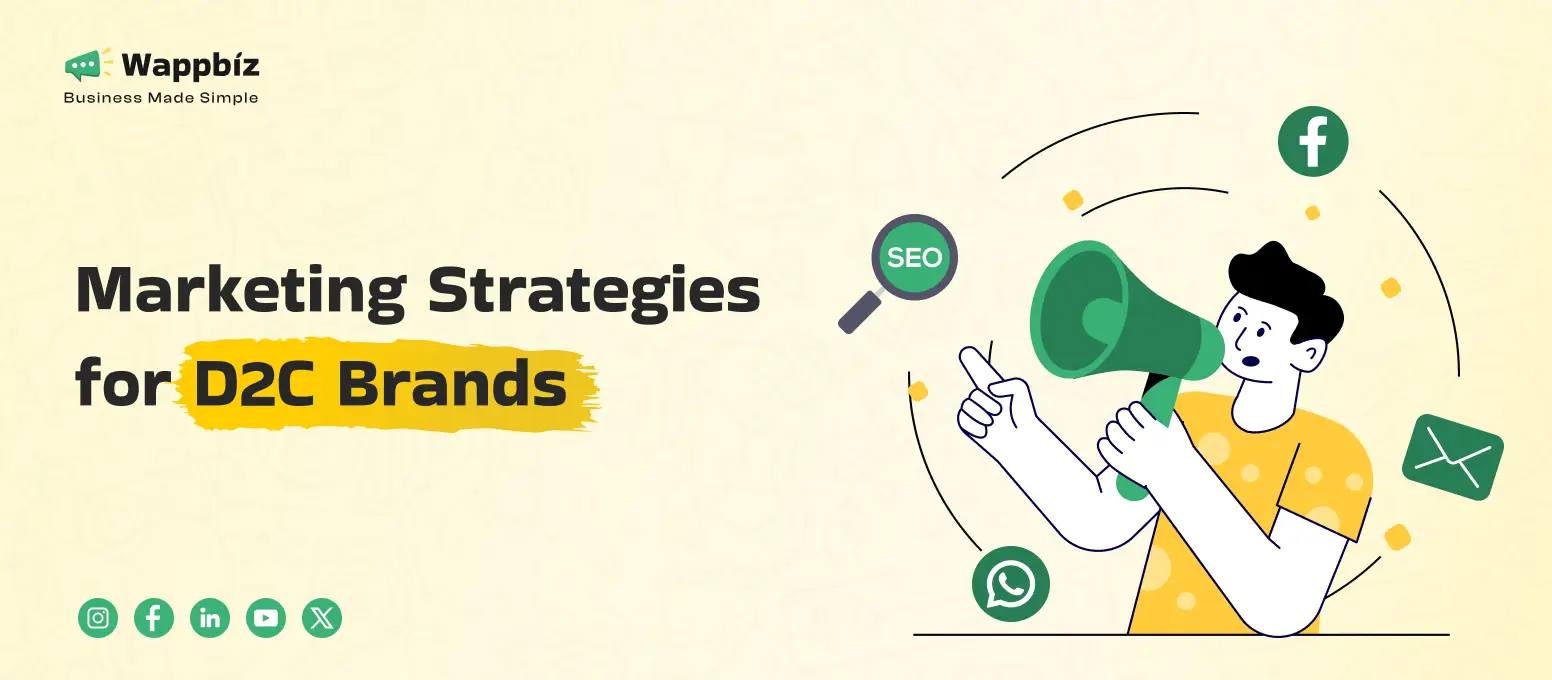In today’s competitive digital environment, staying ahead means making data-driven decisions. With over 2 billion users globally, WhatsApp presents a massive opportunity for customer engagement. But to truly capitalize on this potential, businesses need more than just a presence on WhatsApp they need robust analytics to understand customer behavior and refine their strategies.
Are your WhatsApp messages driving real engagement or getting lost in the noise? Without the right insights, it’s impossible to know. WhatsApp Marketing Analytics Dashboard is your secret weapon to uncover the story behind every conversation, tracking what works and what doesn’t. Ready to turn your chats into data-driven successes? Let’s explore how WhatsApp Analytics can help you optimize every interaction and boost your business impact!
What is WhatsApp Marketing KPIs?
WhatsApp Marketing KPIs involves collecting, tracking, and analyzing data from your WhatsApp interactions. It provides insights into metrics like message delivery rates, response times, user engagement, and content performance. These insights help you understand how effective your WhatsApp strategy is and pinpoint areas for improvement.
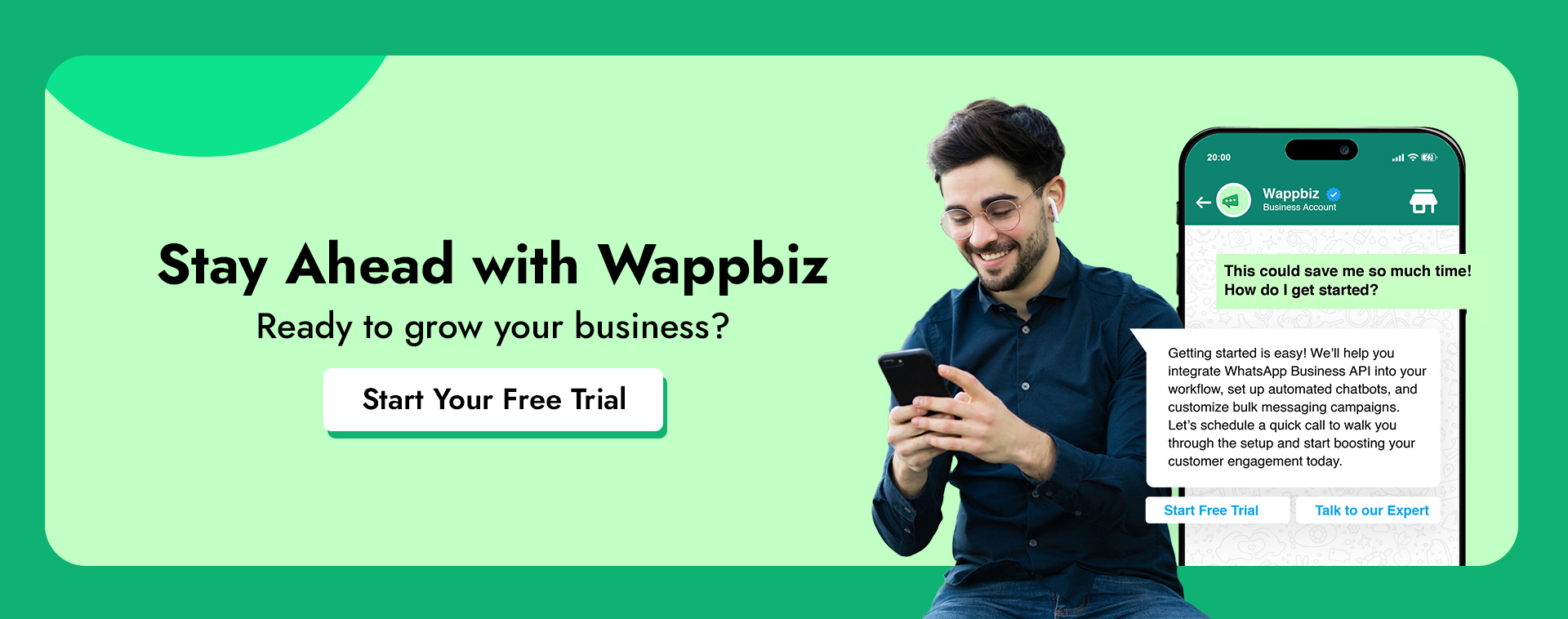
What is WhatsApp Marketing Analytics?
With over 2 billion users worldwide, WhatsApp is a crucial platform for marketing. However, like any marketing strategy, it’s essential to measure its effectiveness. WhatsApp Marketing Analytics provides insights into campaign performance, audience behavior, and overall success, allowing businesses to optimize marketing efforts for better results.
WhatsApp Marketing Analytics collects and analyzes data from your marketing campaigns on WhatsApp. This includes tracking message delivery, engagement, and conversions to measure effectiveness and identify areas for improvement. Businesses use this data-driven approach to refine strategies and optimize campaigns.
12 Important Key Metrics in WhatsApp Analytics
Here’s a detailed breakdown of the most important key metrics in WhatsApp Analytics that every business should monitor to maximize their effectiveness on the platform:
1. Message Delivery Rate
- What It Is: Percentage of messages successfully delivered to recipients.
- Why It Matters: Indicates the health of your contact list and technical performance.
- How to Use It: Regularly clean your contact list and monitor delivery rates to ensure messages reach your audience effectively.
2. Read Receipt Rate
- What It Is: Percentage of delivered messages that recipients have read.
- Why It Matters: Measures audience interest and engagement with your content.
- How to Use It: Test different content types (text, images, videos) to see which drives the highest read rates and refine your strategy accordingly.
3. Response Rate
- What It Is: Percentage of users who reply to your messages.
- Why It Matters: Shows how engaging and actionable your messages are.
- How to Use It: Personalize messages and include clear calls-to-action to boost response rates.
4. Click-Through Rate (CTR)
- What It Is: Percentage of recipients who click on links within your messages.
- Why It Matters: Indicates the effectiveness of your calls-to-action and overall content engagement.
- How to Use It: Experiment with link placements, button styles, and CTAs to optimize clicks.
5. Conversion Rate
- What It Is: Percentage of users who complete a desired action after interacting with your message (e.g., purchase, signup).
- Why It Matters: Directly reflects the success of your marketing efforts in driving results.
- How to Use It: Analyze high-converting messages to replicate their success and optimize landing pages for alignment with your messaging.
6. Unsubscribe Rate
- What It Is: Percentage of users who opt out of receiving messages.
- Why It Matters: A high rate may indicate message frequency issues or irrelevant content, affecting engagement.
- How to Use It: Adjust messaging frequency, segment your audience, and personalize content to reduce opt-outs.
7. Response Time
- What It Is: Average time it takes for your team or system to respond to customer messages.
- Why It Matters: Quick responses enhance customer satisfaction and trust.
- How to Use It: Set response benchmarks, utilize chatbots for FAQs, and train your team to prioritize urgent inquiries.
8. Engagement Rate
- What It Is: Combines interactions like replies, clicks, and user responses to gauge overall audience engagement.
- Why It Matters: High engagement indicates that your campaigns resonate with the audience and drive interaction.
- How to Use It: Use engagement data to refine messaging and introduce interactive elements like polls or multimedia.
9. Bounce Rate
- What It Is: Percentage of messages that fail to reach recipients due to invalid numbers or technical issues.
- Why It Matters: A high bounce rate suggests problems with your contact list or delivery system, limiting reach.
- How to Use It: Regularly verify and update your contact list to reduce bounce rates and use automated tools for list cleaning.
10. Customer Satisfaction (CSAT) Score
- What It Is: Feedback collected through post-chat surveys indicating user satisfaction.
- Why It Matters: Provides direct insights into the quality of customer interactions and service.
- How to Use It: Analyze CSAT scores to improve support strategies, provide additional training, or enhance chatbot capabilities where needed.
11. Automation Success Rate
- What It Is: Percentage of user interactions successfully resolved by your chatbot without human intervention.
- Why It Matters: High rates indicate effective automation, improving efficiency and reducing manual workload.
- How to Use It: Monitor automation success and refine chatbot flows to handle more complex queries and reduce drop-offs.
12. Retention Rate
- What It Is: Tracks the percentage of users who repeatedly engage with your business over time.
- Why It Matters: A key indicator of customer loyalty and long-term engagement.
- How to Use It: Maintain high retention by offering valuable, personalized content, consistent support, and exclusive incentives for loyal customers.
By tracking and optimizing these metrics, you can ensure that your WhatsApp strategy effectively engages your audience, enhances customer satisfaction, and drives real business results.
How to Access WhatsApp Analytics
Accessing WhatsApp Analytics requires platforms like Wappbiz, Twilio, Wati, or the WhatsApp Business API, which offer comprehensive WhatsApp dashboard for tracking metrics and improving engagement strategies.
Pro Tip: Set up automated reports for regular performance updates, saving time and ensuring your strategy stays aligned with business goals.
9 Benefits of WhatsApp Marketing KPIs
WhatsApp isn’t just a messaging platform; it’s a powerful business tool for audience engagement, instant support, and driving conversions. To harness its full potential, understanding and leveraging WhatsApp Analytics is crucial. In this guide, we’ll show you how to use WhatsApp Analytics effectively to boost campaign performance, improve audience engagement, and achieve your business goals.
1. Analyze Engagement Metrics for Deeper Audience Understanding
- Metrics to Monitor: Open Rate, Response Rate, Click-Through Rate (CTR).
- How to Use: Segment your audience based on engagement levels. Target active users with exclusive offers and create re-engagement campaigns for inactive segments. Test different formats like videos and polls to find what drives the most interaction.
2. Optimize Response Times for Enhanced Customer Experience
- Metrics to Monitor: Average Response Time, First Response Time.
- How to Use: If response times lag, use chatbots for immediate replies and train your team to prioritize urgent issues. Regularly monitor response times to maintain high customer service standards.
3. Leverage Automation Metrics to Improve Chatbot Effectiveness
- Metrics to Monitor: Automation Success Rate, Chat Transfer Rate.
- How to Use: Analyze scenarios where your bot struggles and refine its response flows. Update the chatbot’s capabilities to reduce manual intervention and enhance automation efficiency.
4. Monitor Conversion Rates to Refine Campaign Effectiveness
- Metrics to Monitor: Conversion Rate, Funnel Analysis.
- How to Use: For successful campaigns, identify effective elements like messaging style or offers and replicate them. For lower conversion rates, test new strategies such as incentives or simplified CTAs. Use A/B testing to discover what variations yield the best results.
5. Use Audience Insights for Personalized Campaigns
- Metrics to Monitor: Demographic Analysis, Behavioral Insights.
- How to Use: Segment your audience based on demographics and behavior. Schedule campaigns for peak activity times and personalize content based on user preferences. Location-based offers and age-specific messages can significantly increase engagement.
6. Track Unsubscribe Rates to Adjust Your Messaging Frequency
- Metrics to Monitor: Unsubscribe Rate, Feedback Analysis.
- How to Use: Monitor for patterns in unsubscribe rates. If rates spike, adjust messaging frequency or improve content relevance. Use feedback forms to gather direct insights from users who opt out and refine your strategy accordingly.
7. Test and Optimize Message Timing for Better Engagement
- Metrics to Monitor: Peak Engagement Times, Message Timing Effectiveness.
- How to Use: Test various send times and track results. Align your campaign schedule with peak activity hours to maximize engagement. Sending messages at optimal times increases visibility and boosts campaign effectiveness.
8. Monitor Click-Through Rates (CTR) to Test Campaign Content
- Metrics to Monitor: Link Performance, CTR Per Campaign.
- How to Use: Experiment with different message versions, CTAs, and link placements. Track which elements generate the highest CTR and refine your approach. This ensures that each campaign is optimized for maximum engagement.
9. Use Retention Rates to Measure Long-Term Engagement
- Metrics to Monitor: Retention Rate Analysis, Repeat Customer Insights.
How to Use: Focus on nurturing high-retention segments with personalized offers or loyalty rewards. For lower retention users, implement re-engagement strategies like special discounts to encourage repeated interactions.
The Importance of Analytics
Analytics are the backbone of any successful marketing strategy. They provide a roadmap for understanding how customers interact with your brand, what they respond to, and where improvements can be made. Here are several key reasons why detailed analytics are essential in WhatsApp marketing:
1. Understanding Customer Behaviour
Detailed analytics allow businesses to gain a deep understanding of customer preferences and behaviours. By analysing data such as message open rates, response times, and engagement levels, companies can identify trends and patterns that inform their marketing strategies. For instance, if a particular type of message—such as promotional offers or informative content—receives higher engagement, businesses can tailor their future communications accordingly.
2. Measuring Campaign Effectiveness
Every marketing campaign should have clear objectives and measurable outcomes. Analytics provide the metrics needed to assess the effectiveness of WhatsApp campaigns. Key performance indicators (KPIs) such as click-through rates, conversion rates, and customer retention rates can reveal how well a campaign is performing. This data enables businesses to make data-driven decisions about where to allocate resources and how to adjust messaging for better results.
3. Real-Time Insights for Agile Marketing
One of the significant advantages of using analytics in WhatsApp marketing is the ability to make real-time adjustments. Unlike traditional marketing channels, where feedback can take time to gather, WhatsApp provides immediate insights into how customers are responding. If a campaign is underperforming, businesses can quickly pivot their strategy based on the data collected. This agility is crucial in a fast-paced digital environment where customer preferences can change rapidly.
4. Enhancing Customer Experience
In an era where customer experience is paramount, analytics can help businesses tailor their interactions to meet customer needs. By tracking customer interactions and feedback, businesses can identify pain points and areas for improvement. For example, if customers frequently ask the same questions, a business can implement a chatbot to address these queries, enhancing the overall customer experience.
5. Personalization at Scale
Personalization is no longer a luxury; it’s a necessity. Customers expect brands to understand their preferences and deliver tailored content. Analytics enable businesses to segment their audience based on behaviour, demographics, and interests, allowing for personalised messaging that resonates with each customer. This targeted approach can significantly increase engagement rates and drive conversions.
Why Wappbiz Insights is a Best whatsApp analytics Tool
Wappbiz offers a comprehensive suite of campaign analytics tools designed specifically for WhatsApp marketing. By integrating with the WhatsApp Business API, Wappbiz provides businesses with real-time data on message performance, customer interactions, and overall campaign effectiveness. Here are some of the key features that Wappbiz offers:
1. Detailed Reporting
Wappbiz provides in-depth reporting features that allow businesses to track key metrics over time. Users can access dashboards that display performance data, making it easy to visualise trends and identify areas for improvement. This level of detail helps businesses understand what works and what doesn’t, allowing for informed decision-making.
2. Audience Segmentation
With Wappbiz, businesses can segment their audience based on various criteria, such as location, purchase history, and engagement levels. This segmentation enables targeted messaging that speaks directly to the interests and needs of different customer groups, enhancing the likelihood of engagement and conversion.
3. A/B Testing Capabilities
Wappbiz allows businesses to conduct A/B testing on their messages, enabling them to compare different approaches and determine which resonates best with their audience. This data-driven experimentation can lead to more effective marketing strategies and improved campaign performance.
4. Integration with Other Tools
Wappbiz seamlessly integrates with other marketing and CRM tools, allowing businesses to centralise their data and gain a holistic view of their marketing efforts. This integration ensures that businesses can leverage insights from multiple channels to inform their WhatsApp marketing strategies.
Conclusion
In the realm of WhatsApp marketing, data-driven decisions are essential for success. By leveraging detailed analytics through platforms like Wappbiz, businesses can gain valuable insights into customer behaviour, measure campaign effectiveness, and enhance the overall customer experience. The ability to make real-time adjustments and personalise communications at scale can lead to higher engagement rates, improved customer satisfaction, and ultimately, increased conversions.
WhatsApp Analytics is a powerful tool that provides essential insights into your campaign performance and audience engagement. By tracking and optimizing metrics such as engagement rates, response times, conversion rates, and unsubscribe rates, you can refine your strategies, boost engagement, and achieve measurable business results. Regularly reviewing these insights ensures continuous improvement, keeping you ahead of the competition.
Ready to elevate your WhatsApp strategy? Dive into your analytics today and make data-driven decisions to strengthen your audience connections and drive better outcomes!

FAQ’s
1. Can I get analytics on WhatsApp?
Yes, you can access analytics using the WhatsApp Business API or third-party platforms like Wappbiz, which provide insights into message performance, engagement levels, and user behavior.
2. How do I analyze WhatsApp chat data?
Use tools integrated with the WhatsApp Business API, such as Wappbiz, to track and analyze metrics like message delivery rates, read rates, response times, and more.
3. How can I extract data from a WhatsApp chat?
You can export individual chats directly using WhatsApp’s ‘Export Chat’ feature for basic information. For more detailed insights, utilize analytics platforms designed for WhatsApp Business.
4. How can I track WhatsApp marketing?
Track your marketing efforts through platforms integrated with the WhatsApp Business API. These platforms offer metrics such as click-through rates (CTR), conversions, and overall engagement levels.
5. How is WhatsApp used in marketing?
Businesses use WhatsApp for:
- Sending personalized messages
- Running campaigns
- Providing customer support
- Engaging users with multimedia content and automated chatbots
6. How do I get analytics on WhatsApp groups?
For group analytics, use specialized third-party tools that monitor group activity, such as engagement rates and message frequency. These tools are designed to provide deeper insights into WhatsApp group dynamics.

